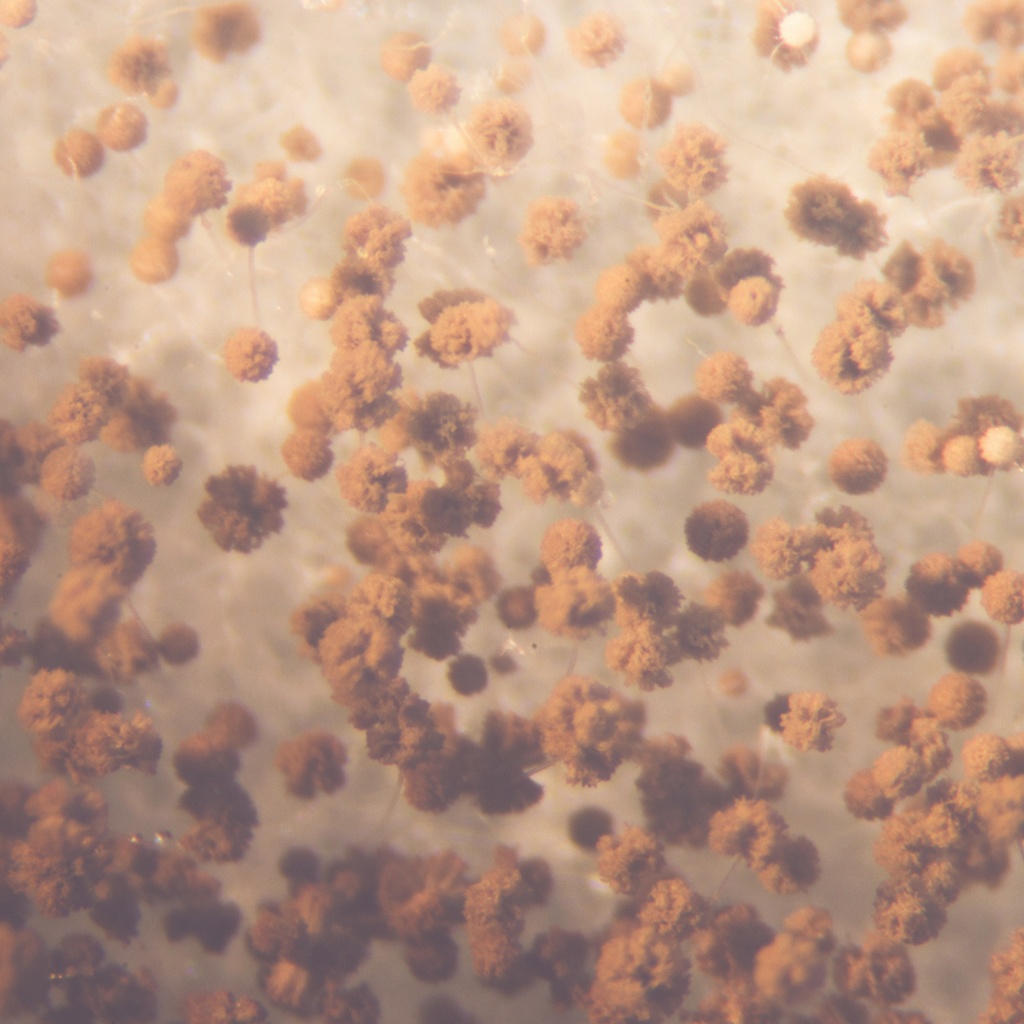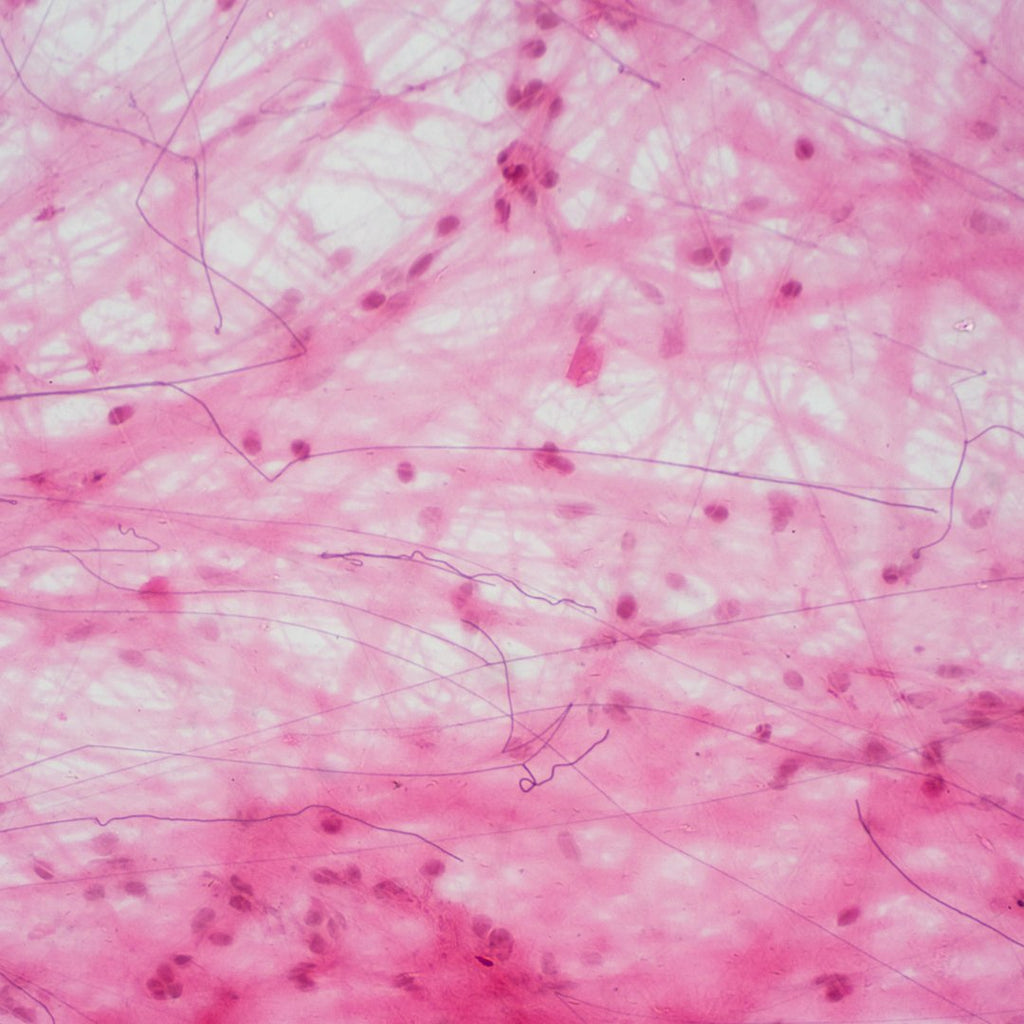Cytokines are hormonal messengers affecting the immune system, consisting of pro-inflammatory T-helper 1 (Th1) cells and anti-inflammatory T-helper 2 (Th2) cells. Th1 and Th2 cytokine balancing is a well established nutritional target for a number of health conditions. Several nutrients are known to influence Th1/Th2 balance, and to influence the activity of regulatory T cells (Treg cells) including, but not limited to: plant sterols, polyphenols, melatonin, pre & probiotics, vitamins, minerals and the long-chain omega-3 fatty acids EPA (eicosapentaenoic acid) and DHA (docosahexaenoic acid). With many of these nutrients known to be low or deficient in neurodevelopmental disorders, including attention-deficit hyperactivity disorder (ADHD), this may explain their potential in the management of symptoms of ADHD where immune dysfunction is increasingly recognised as a pathophysiological mechanism behind the disorder. Thus, early nutrient interventions that purposefully focus on optimising Treg cell activity may offer a safe and effective method for managing symptoms and reducing its continuation into adulthood.
The adult with ADHD
ADHD is associated primarily with defects in the normal functioning of the neurological system and brain. Children with ADHD typically experience difficulties with language and speech, motor skills, behaviour, memory and learning. Early management of symptoms is vitally important, because if ADHD progresses into adulthood (as seen in 30-50% of cases), these individuals are at risk of multiple disadvantages throughout their lifetime. Not only do adults with ADHD generally achieve a lower standard of education which impacts on their job/career expectations, but they are also at a higher risk of developing substance/alcohol abuse issues and/or psychiatric disorders, and are statistically more likely to commit a crime than individuals without the disorder.
Standard interventions for ADHD
Using the broad Diagnostic and Statistical Manual of Mental Disorders, 4th Edition (DSM-IV) criteria, the prevalence of ADHD in school-aged children and adolescents in the UK is estimated at 5%, with further estimates for the prevalence of ADHD in adults ranging from 2.5–4% (McCarthy et al., 2012). While no single risk factor explains ADHD, genes, pre and perinatal risks, psychosocial factors and environmental toxins have all been considered as contributors. The conventional treatments for ADHD usually consist of behavioural and educational interventions, often combined with psycho-stimulant medication. Stimulants act by blocking the reuptake of noradrenaline and dopamine and increasing their release into the extracellular space, with new research suggesting that they can also raise low cortisol levels (a growing body of research suggests that people with ADHD have low cortisol levels). While stimulants can be effective in as many as 70% of cases, approximately one third of ADHD patients who take pharmaceuticals report significant adverse effects including weight loss, growth inhibition, abdominal pain, headaches and sleeping problems. Increasing apprehension regarding stimulant medication and the ramifications of its use in children has led many parents and sufferers to look to alternative therapeutic interventions.
ADHD, stress, cortisol and immune function
Down-regulated or displaced HPA-axis with lower cortisol levels is a common observation in children with ADHD. Exposure to foetal and/or childhood psychosocial adversity has been associated with both ADHD and HPA-axis functioning, and may therefore explain the low cortisol levels in ADHD as a consequence of early programming of the HPA-axis (Isaksson et al., 2013). Under normal conditions, higher cortisol (as an auto-regulation mechanism in the control of inflammatory responses) affects the Th1/ Th2 balance to shift the immune response from pro-inflammatory Th1 predominance to a more balanced pro-inflammatory Th1/ anti-inflammatory Th2 cytokine profile.
The importance of Treg
In children suffering from ADHD, cortisol production is found to be relatively deficient and concentrations of Th1-derived pro-inflammatory cytokines are elevated, while the Th2-derived anti-inflammatory IL-10 is depressed at the expense of generating sufficient numbers of Treg cells. The resulting defective down-regulation of inflammation and lack of balanced immunoregulation may thus contribute to an enhanced pro-inflammatory cytokine synthesis, which has a major role in the pathophysiology of brain white matter damage, as chronic elevation of TNF-α and IL-6 primes cells to undergo apoptosis or necrosis with consequential impairments in children’s self-regulation at the emotional, cognitive and behavioural levels. Furthermore, in some ADHD children, the corresponding decrease in Treg formation can then result in a Th2- driven inflammation making the child ‘‘allergy-prone’’ (thus more likely to have ear infections, asthma, allergic rhinitis, atopic dermatitis, and allergic conjunctivitis) by inducing activated B-cells, mast cells and eosinophils (Miyazaki et al., 2017).
The effect of dietary components on Treg cell homeostasis
A number of well established dietary interventions, including probiotics, micronutrients and essential fatty acids, have been used successfully in the management of symptoms of ADHD. While many of these interventions’ focus are linked to improving neurotransmitter production and function, their benefits can also be linked to improved immune function via their impact on Treg cell activity (Kim & Lee 2013).
Vitamins
A number of essential vitamins are known to regulate Treg cell activity. Vitamins A and D, for example, ‘crosstalk’ to maintain immune homeostasis and Treg function, whilst insufficient vitamin A or D can cause Treg imbalance with excess Th1 and insufficient Th2 function. Indeed, increasing levels of both vitamin A and D improves Treg function and skews the Th1/Th2 balance towards Th2 (Issazadeh-Navikas et al., 2012). In addition, Treg cells also express a subtype of the receptor which detects folic acid (the folate receptor 4), with folate known to play a pivotal role in the maintenance of Treg cell survival (Kinoshita et al., 2012). Low intake or deficiencies in a number of essential vitamins can therefore exacerbate symptoms associated with low or impaired Treg cell activity.
Minerals
Alterations in plasma levels of a number of trace minerals have been associated with symptoms of ADHD and several studies have shown children to respond to interventions when levels are restored. Given the role that minerals such as magnesium, zinc and selenium have on immune function, it is possible that the intervention benefits can be attributed to Th1/Th2 balance. For example, the immune-enhancing effects of selenium supplementation are believed to be (in part) through its ability to regulate expression of Th1/Th2 cytokines (Hoffmann et al., 2010; Huang et al., 2012). In addition, zinc deficiency results in fewer Treg cells coming to maturity, with zinc supplementation shown to increase Treg cell numbers (Rosenkranz et al., 2017).
Omega-3
Clinical and biochemical evidence suggests that deficiencies of PUFA could be related to ADHD, as both children and adolescents with the condition are consistently shown to have lower omega-3 blood levels and a higher omega-6/omega-3 (AA/EPA) ratio. Meta-analysis studies support the use of EPA, GLA and DHA in the management of ADHD symptoms (Puri & Martins 2014) and for their ability to suppress allergic reactions (Kremmyda et al., 2011). In addition to promoting Th1 to T- Th2 cell effector T-cell differentiation, omega-3 may also exert anti-inflammatory actions by inducing apoptosis in Th1 cells (Kim et al., 2010). This, and the ability of omega-3 to enhance the development of Tregs (Han et al., 2012) is likely to be one of many mechanisms by which they improve symptoms related to ADHD and atopic diseases associated with the condition.
Probiotics
Commensal microbiota play a crucial role in the development of intestinal immunity and a number of microbial species (such as Bifidobacterium & Lactobacillus) and their metabolites (the short-chain fatty acids, acetate, propionate and butyrate; generated as end products of the fermentation of dietary fibres) can all influence immune homeostasis via the induction of Tregs (Verlaet et al., 2014). Dysbiosis (and resulting food allergies) are common to ADHD and the use of both pre- and probiotics are becoming well recognised for their success in managing symptoms that may well be expanded to include regulation of intestinal immunity. Indeed, given the role that probiotics play in the development of intestinal immunity it is suggested that probiotic supplementation early in life may reduce the risk of neuropsychiatric disorder development later in childhood (Pärtty et al., 2015).
Polyphenols
In addition to their archetypal antioxidant capacities, dietary polyphenols also have immunoregulatory effects via their ability to increase Treg cell activity. Epigallocatechin gallate (EGCG), curcumin and pycnogenol are all examples of effective antiinflammatory, antioxidant polyphenols that have been demonstrated to modulate the immune system influencing both activation and differentiation of multiple cell types involved in the immune response including Treg cells (Pae & Wu 2013; Hondono et al., 2015; Trebatická & Ďuračková 2015).
Summary
Substantial alterations implicated in ADHD apparently occur in the immune system and epigenetic regulation of gene expression. As a result, chronic inflammation and oxidative stress could develop, which can lead to ADHD symptoms, for example by chronic T-cell-mediated neuroinflammation. Modulation of immune system activity might have potential in ADHD treatment, using nutritional approaches providing safe and low-cost ADHD therapy.






